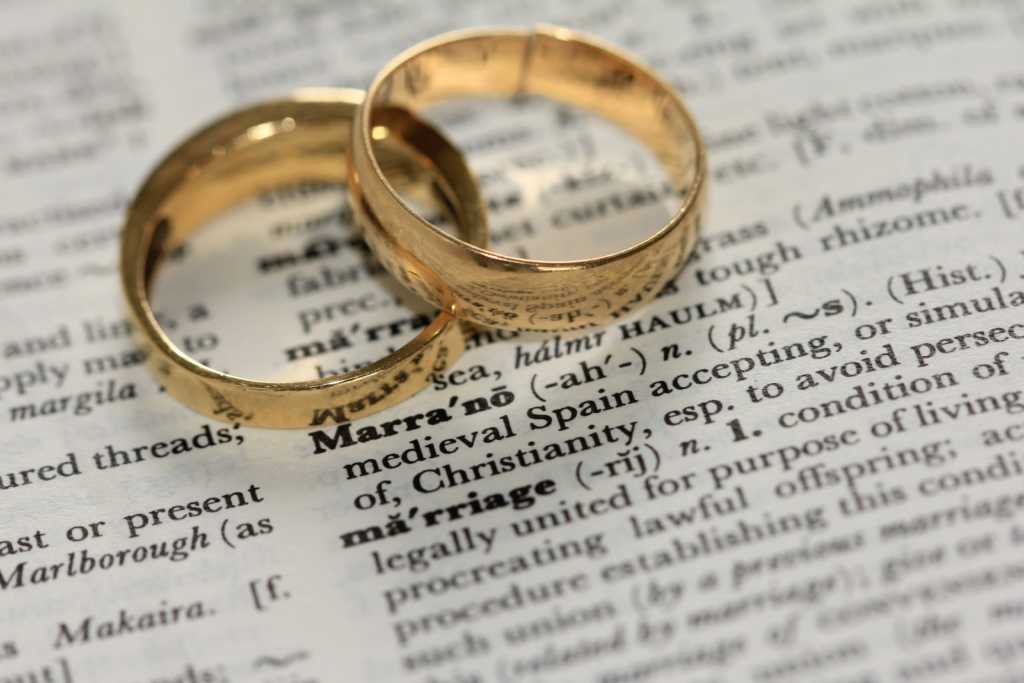If you open up Google and search “the origins of marriage,” you’ll find an unending list of theories, each claiming to pinpoint the bonafide beginning of the institution. The truth, though, is it has existed throughout all human history. But, just as the 18th-century hymnist Robert Robinson wrote, we are “prone to wander.”
Our propensity to drift away from morality is perfectly exemplified in the American Psychological Association’s recently formed Consensual Non-Monogamy Task Force.
Secular society would have us believe human beings stumbled upon marriage over time, after years of experimentation with polygamy, homosexuality, sexually open relationships, and relationship anarchy, among other things. All of that did happen — and still very much does happen — but not because the institution of marriage is in some way relatively new.
For as long as human beings have existed, so has marriage.
God ordained marriage in the Garden of Eden, when he created Adam and Eve. In Genesis 2:24, Moses wrote, “That is why a man leaves his father and mother and is united to his wife, and they become one flesh.”
That verse was a side note from Moses, who momentarily paused the creation story he was recording to explain what God had just established. Here’s what happened a few verses earlier:
Then the Lord God said, “It is not good for the man to be alone. I will make a helper who is just right for him.” So the Lord God formed from the ground all the wild animals and all the birds of the sky. He brought them to the man to see what he would call them, and the man chose a name for each one. He gave names to all the livestock, all the birds of the sky, and all the wild animals. But still there was no helper just right for him.
So the Lord God caused the man to fall into a deep sleep. While the man slept, the Lord God took out one of the man’s ribs and closed up the opening. Then the Lord God made a woman from the rib, and he brought her to the man.
“At last!” the man exclaimed.
“This one is bone from my bone, and flesh from my flesh! She will be called ‘woman,’ because she was taken from ‘man.’”
Then, in the New Testament, the apostle Paul gave even more profound meaning to God’s perfect institution in Ephesians 5:29-33.
In the passage, Paul commands husbands to love their wives and sacrifice for them, “just as Christ cares for the church.”
“As the Scriptures say, ‘A man leaves his father and mother and is joined to his wife, and the two are united into one,’” the apostle wrote. “This is a great mystery, but it is an illustration of the way Christ and the church are one.”
God invented marriage with two goals in mind. Not only is it intended to unite a man and a woman together in love; marriage also serves as a tangible illustration of the Gospel. In salvation, we become one with Jesus, who sacrificed his life for us.
Jesus himself referenced the value of marriage in Matthew 19:4-6, when he told the Pharisees, “Haven’t you read the Scriptures? They record that from the beginning, ‘God made them male and female.’ … ‘This explains why a man leaves his father and mother and is joined to his wife, and the two are united into one.’ Since they are no longer two but one, let no one split apart what God has joined together.”
And in Exodus 20, when God handed Moses the 10 Commandments on Mount Sinai, he declared, “You must not commit adultery,” protecting the sanctity of marriage and allowing sexual intercourse only within the confines of that relationship.
The history of marriage is clear and its purpose is unambiguous. No matter how much we may wander — and we have drifted so far — the institution of marriage cannot truly be redefined.
That fundamental understanding of the meaning of marriage makes sense of why so many Christians were concerned by the U.S. Supreme Court’s landmark ruling in 2015 on Obergefell v. Hodges, which legally redefined marriage to include people in same-sex relationships.
At the time, supporters of the high court’s ruling criticized believers for arguing the decision would lead to a “slippery slope” of sexual promiscuity, yet that’s exactly what has happened.
The APA’s new task force is hoping to reduce the “stigma” surrounding “marginalized” polyamorous people. The group is also dedicated to increasing “awareness” and “inclusivity” for “open relationships, swinging, [and] relationship anarchy,” which means there are no rules and any connection can become sexual, so long as every partner involved is consenting (essentially rendering word “relationship” meaningless).
Our drift away from God ’s perfect idea for marriage is not new, and it’s perhaps more important now than ever that we protect it. Our only hope in safeguarding God’s design from our propensity to wander is by resting and relying on the grace of Christ.
“Oh, to grace how great a debtor, daily I’m constrained to be,” Robinson wrote. “Let that goodness, like a fetter, bind my wandering heart to thee. Prone to wander, Lord, I feel it. Prone to leave the God I love. Here’s my heart, oh, take and seal it. Seal it for thy courts above.”



